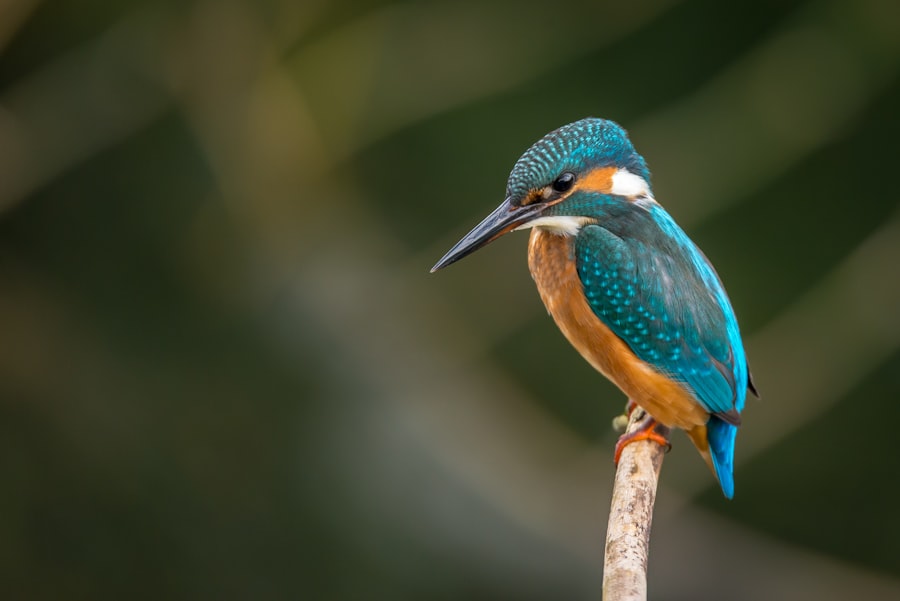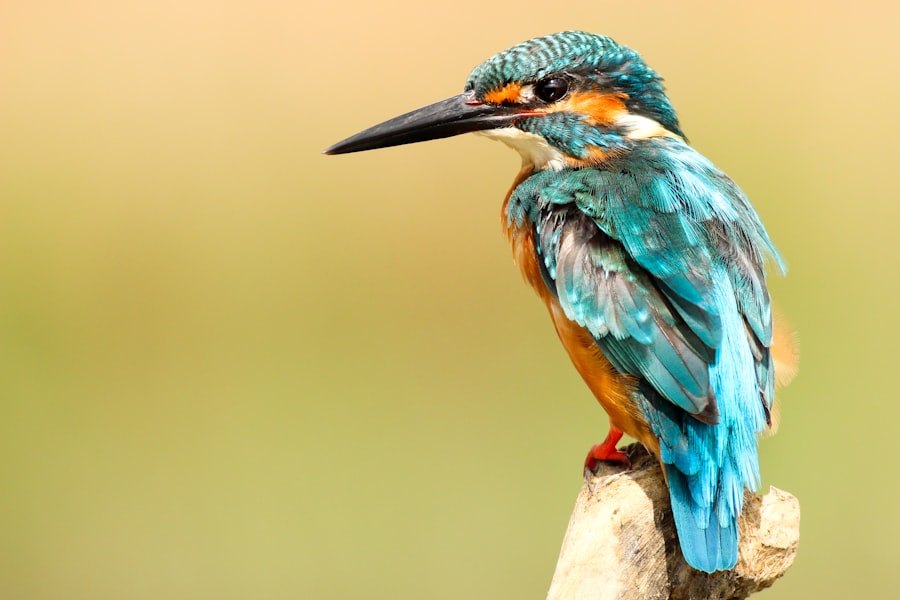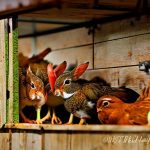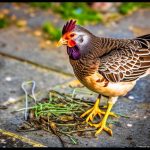Hawks are diurnal raptors renowned for their sharp talons, exceptional eyesight, and efficient hunting skills. These birds of prey primarily target small mammals and birds, posing a potential threat to domestic chickens. Understanding hawk behavior is crucial for effective flock protection.
Hawks employ stealthy hunting techniques, often utilizing elevated perches to survey their surroundings before swiftly descending upon prey. They exhibit territorial behavior, particularly during breeding seasons, and may view chickens as competitors for resources or territory. These raptors are most active during daylight hours, especially in the early morning and late afternoon.
Their superior vision allows them to detect potential prey from considerable distances. Hawks are opportunistic hunters, readily exploiting accessible food sources, which makes free-ranging chickens particularly vulnerable to attacks. Certain hawk species, such as Cooper’s hawks and sharp-shinned hawks, frequently inhabit suburban and urban areas where backyard chickens are common.
Familiarity with hawk behavior and habits enables chicken owners to assess potential risks and implement appropriate protective measures for their flocks.
Table of Contents
- 1 Implementing Physical Barriers: Building Chicken Coops and Enclosures
- 2 Deterrents and Scare Tactics: Using Visual and Auditory Repellents
- 3 Utilizing Predator-Proofing Techniques: Securing Your Chicken Run
- 4 Creating a Hawk-Friendly Environment: Providing Alternative Prey and Habitat
- 5 Utilizing Natural Predators: Attracting Owls and Falcons to Deter Hawks
- 6 Seeking Professional Assistance: Consulting with Wildlife Experts and Bird Control Services
- 7 FAQs
- 7.1 What are some natural ways to keep hawks away from my chickens?
- 7.2 Are there any predator deterrent devices that can help keep hawks away from my chickens?
- 7.3 What should I do if I spot a hawk near my chicken coop?
- 7.4 Are there any legal methods to keep hawks away from my chickens?
- 7.5 What are some signs that a hawk has been targeting my chickens?
Key Takeaways
- Hawks are a threat to chickens and can be identified by their behavior, such as circling and swooping.
- Building chicken coops and enclosures with strong physical barriers can help protect chickens from hawk attacks.
- Visual and auditory repellents, such as scarecrows and noise makers, can deter hawks from targeting chickens.
- Securing chicken runs with predator-proofing techniques, such as using hardware cloth and netting, can prevent hawk attacks.
- Providing alternative prey and habitat, as well as attracting natural predators like owls and falcons, can create a hawk-friendly environment and deter them from targeting chickens.
- Consulting with wildlife experts and bird control services can provide professional assistance in dealing with hawk threats to chickens.
Implementing Physical Barriers: Building Chicken Coops and Enclosures
Secure Chicken Coops: The First Line of Defense
One of the most effective ways to safeguard your chickens from hawk attacks is by providing a sturdy and secure chicken coop. A well-built coop offers a safe and protected environment for your chickens, shielding them from potential hawk attacks. When building a chicken coop, it’s essential to use high-quality materials and ensure that it is predator-proof, with no gaps or openings that hawks could exploit.
Enclosed Outdoor Runs: An Additional Layer of Protection
In addition to a secure chicken coop, it’s crucial to provide your chickens with a covered outdoor run where they can safely spend time outside without the risk of hawk attacks. This can be achieved by using wire mesh or netting to cover the top of the chicken run, creating a physical barrier that prevents hawks from swooping down and targeting your chickens. When designing the outdoor run, consider the height and strength of the materials used to ensure that it can withstand potential attacks from hawks.
Physical Barriers: The Key to a Hawk-Free Environment
By implementing physical barriers such as chicken coops and enclosures, you can create a safe and protected environment for your chickens, reducing their vulnerability to hawk attacks. By covering the chicken run with wire mesh or netting, you can provide an extra layer of protection against aerial predators like hawks. By creating a secure and enclosed space for your chickens, you can significantly reduce the risk of hawk attacks and provide them with a safe environment to roam and forage.
Deterrents and Scare Tactics: Using Visual and Auditory Repellents

In addition to physical barriers, deterrents and scare tactics can be effective in deterring hawks from targeting your chickens. Visual repellents such as reflective tape or shiny objects can create a disorienting effect for hawks, making them less likely to approach your property. By hanging reflective tape or placing shiny objects around your chicken coop and outdoor run, you can create a visual deterrent that may discourage hawks from getting too close to your chickens.
Additionally, scarecrow-like effigies or decoys of larger birds of prey can create the illusion of a potential threat, causing hawks to think twice before approaching your property. Auditory repellents such as noise-making devices or predator calls can also be effective in deterring hawks from targeting your chickens. By installing motion-activated sound devices or playing recordings of predator calls, you can create a deterrent that disrupts the peaceful environment hawks seek for hunting.
The sudden noise or unfamiliar sounds can startle hawks and make them think twice about approaching your property. By using visual and auditory repellents, you can create a hostile environment for hawks, making them less likely to target your chickens.
Utilizing Predator-Proofing Techniques: Securing Your Chicken Run
Predator-proofing your chicken run is essential in protecting your flock from hawk attacks. This involves securing the perimeter of the chicken run with sturdy fencing or wire mesh that is specifically designed to keep out aerial predators like hawks. It’s important to use materials that are strong enough to withstand potential attacks from hawks and other predators, such as hardware cloth or welded wire mesh with small openings that hawks cannot penetrate.
Additionally, burying the fencing underground or extending it outward at an angle can prevent hawks from digging under or flying over the enclosure. Another predator-proofing technique is to install a roof over the chicken run using wire mesh or netting to create a secure barrier against aerial predators. This prevents hawks from swooping down and targeting your chickens from above.
When installing a roof over the chicken run, ensure that it is securely attached and covers the entire area to provide maximum protection for your flock. By utilizing predator-proofing techniques such as securing the perimeter and installing a roof over the chicken run, you can create a safe and protected environment for your chickens, reducing their vulnerability to hawk attacks.
Creating a Hawk-Friendly Environment: Providing Alternative Prey and Habitat
Creating a hawk-friendly environment involves providing alternative prey and habitat to attract hawks away from your property. By offering food sources such as bird feeders or providing habitat features like perching trees or shrubs, you can encourage hawks to hunt in areas away from your chicken coop and outdoor run. This can help reduce the likelihood of hawks targeting your chickens as they will have access to alternative prey in a more suitable hunting environment.
Additionally, maintaining a natural landscape with diverse vegetation can provide cover for smaller birds and mammals, making it more appealing for hawks to hunt in these areas instead of targeting your chickens. Another way to create a hawk-friendly environment is by implementing wildlife-friendly practices that support the natural ecosystem. This includes avoiding the use of chemical pesticides or rodenticides that can harm the food chain and disrupt the balance of prey species that hawks rely on for hunting.
By promoting a healthy and diverse ecosystem on your property, you can help sustain natural prey populations for hawks while minimizing their interest in targeting your chickens. Creating a hawk-friendly environment involves providing alternative prey and habitat features that attract hawks away from your property, reducing the risk of potential attacks on your flock.
Utilizing Natural Predators: Attracting Owls and Falcons to Deter Hawks

Creating a Balanced Ecosystem
Attracting natural predators such as owls and falcons can be an effective way to deter hawks from targeting your chickens. Owls and falcons are also birds of prey that compete with hawks for food and territory, making them natural deterrents in the ecosystem. By providing habitat features such as nesting boxes or perching sites for owls and falcons, you can encourage these natural predators to frequent your property and help keep hawk populations in check.
Providing Suitable Habitat and Food Sources
This creates a natural balance that reduces the likelihood of hawks targeting your chickens as they will be deterred by the presence of other predatory birds. In addition to providing habitat features, you can also attract owls and falcons by offering suitable food sources such as rodent populations that these natural predators rely on for hunting. By promoting a healthy ecosystem with abundant prey species for owls and falcons, you can encourage their presence on your property and create a natural deterrent against hawk attacks on your chickens.
Maintaining a Balanced Ecosystem
Utilizing natural predators such as owls and falcons can help maintain a balanced ecosystem while reducing the risk of potential hawk threats to your flock. By creating an environment that supports a diverse range of species, you can promote a natural balance that benefits your chickens and the entire ecosystem.
Seeking Professional Assistance: Consulting with Wildlife Experts and Bird Control Services
If you are facing persistent hawk threats to your chickens, seeking professional assistance from wildlife experts or bird control services can provide valuable guidance and support in addressing the issue. Wildlife experts have specialized knowledge of bird behavior and predator-prey dynamics, allowing them to assess the specific risks to your flock and recommend effective strategies for protection. They can provide insights into local hawk populations, their behavior patterns, and potential deterrent methods tailored to your specific situation.
Bird control services specialize in managing bird-related issues and can offer professional solutions for deterring hawks from targeting your chickens. They may utilize advanced techniques such as bird netting, bird spikes, or bird repellent gels to create physical barriers or deterrents that prevent hawks from accessing your property. By consulting with wildlife experts and bird control services, you can gain access to professional expertise and resources that can help effectively address hawk threats to your flock.
In conclusion, protecting backyard chickens from hawk attacks requires a comprehensive approach that combines understanding the behavior of hawks, implementing physical barriers, utilizing deterrents and scare tactics, predator-proofing techniques, creating a hawk-friendly environment, attracting natural predators, and seeking professional assistance when needed. By taking proactive measures to safeguard your flock, you can create a safe and secure environment that minimizes the risk of potential hawk threats while promoting a healthy ecosystem for both your chickens and local wildlife.
If you’re looking for ways to keep hawks away from your chickens, you may also be interested in learning about the importance of a secure chicken coop. Check out this article on chicken coop design in Grand Island, NE to ensure your chickens have a safe and protected environment. A well-designed coop can help keep predators like hawks at bay and provide a comfortable space for your chickens to thrive.
FAQs
What are some natural ways to keep hawks away from my chickens?
Some natural ways to keep hawks away from your chickens include providing overhead cover such as netting or trees, using scare tactics like reflective objects or noise makers, and having roosters to help alert the flock of danger.
Are there any predator deterrent devices that can help keep hawks away from my chickens?
Yes, there are predator deterrent devices such as motion-activated sprinklers, predator decoys, and electronic deterrents that emit sounds to scare away hawks and other predators.
What should I do if I spot a hawk near my chicken coop?
If you spot a hawk near your chicken coop, it’s important to take immediate action to protect your chickens. You can use scare tactics like yelling, waving your arms, or using noise makers to scare the hawk away. It’s also a good idea to provide overhead cover for your chickens to hide under.
Are there any legal methods to keep hawks away from my chickens?
In the United States, hawks are protected under the Migratory Bird Treaty Act, which makes it illegal to harm, harass, or kill them. However, there are legal methods to deter hawks from preying on your chickens, such as using scare tactics and providing overhead cover for your flock.
What are some signs that a hawk has been targeting my chickens?
Some signs that a hawk has been targeting your chickens include finding feathers or remains of a chicken in the area, observing a hawk circling or perching near your coop, or noticing a sudden decrease in your chicken flock. It’s important to be vigilant and take preventive measures to protect your chickens from hawk attacks.
Meet Walter, the feathered-friend fanatic of Florida! Nestled in the sunshine state, Walter struts through life with his feathered companions, clucking his way to happiness. With a coop that’s fancier than a five-star hotel, he’s the Don Juan of the chicken world. When he’s not teaching his hens to do the cha-cha, you’ll find him in a heated debate with his prized rooster, Sir Clucks-a-Lot. Walter’s poultry passion is no yolk; he’s the sunny-side-up guy you never knew you needed in your flock of friends!







